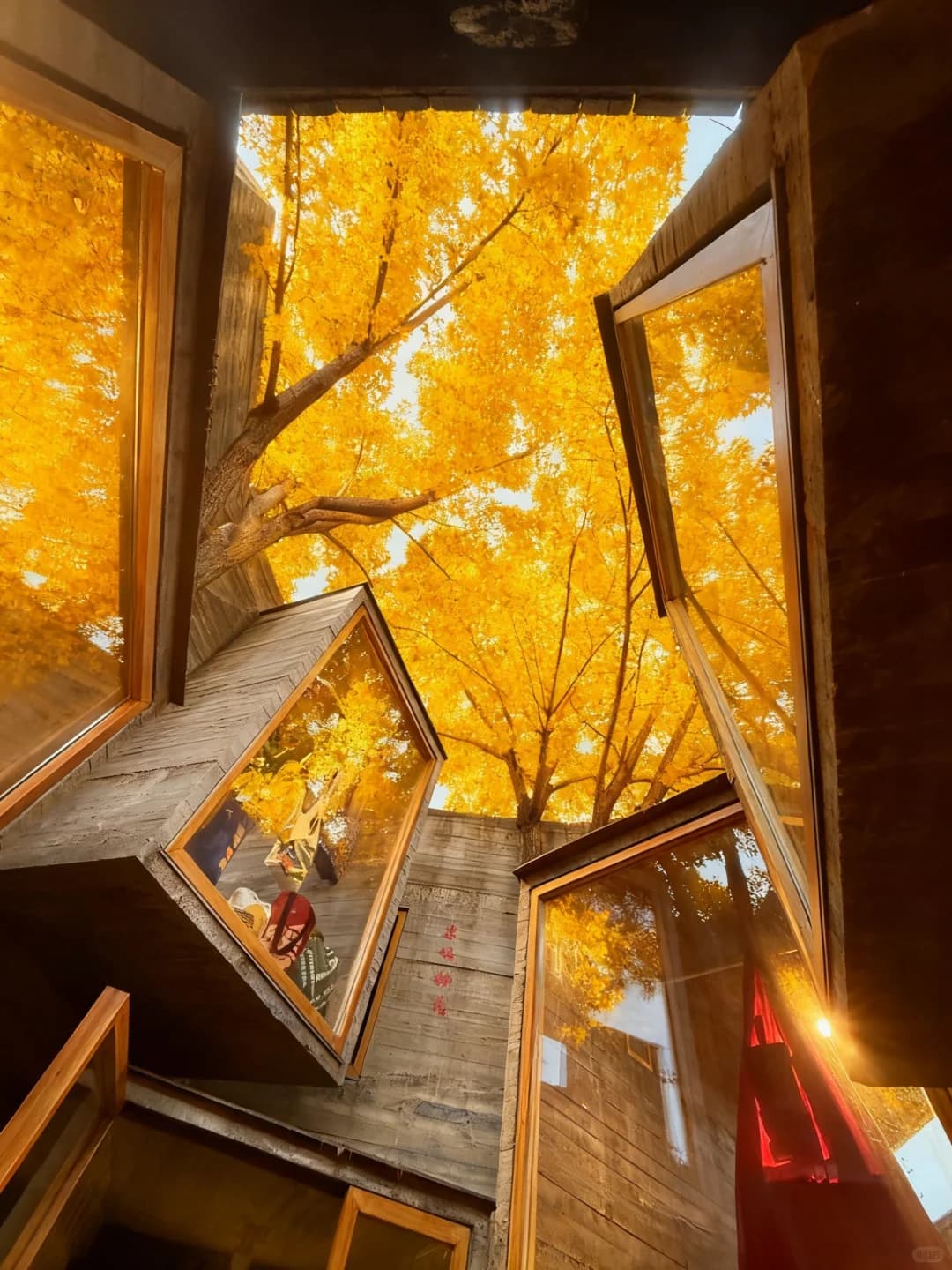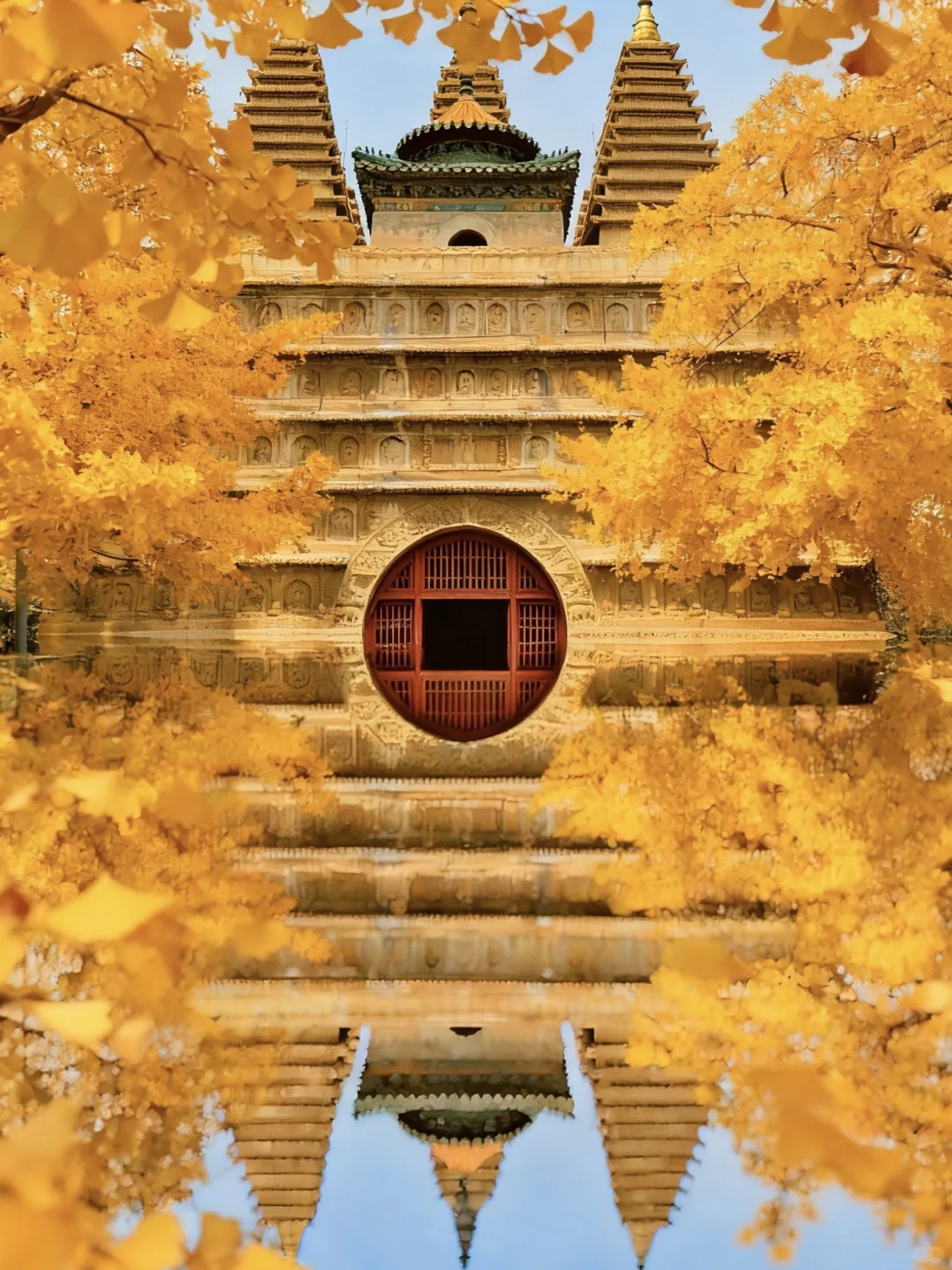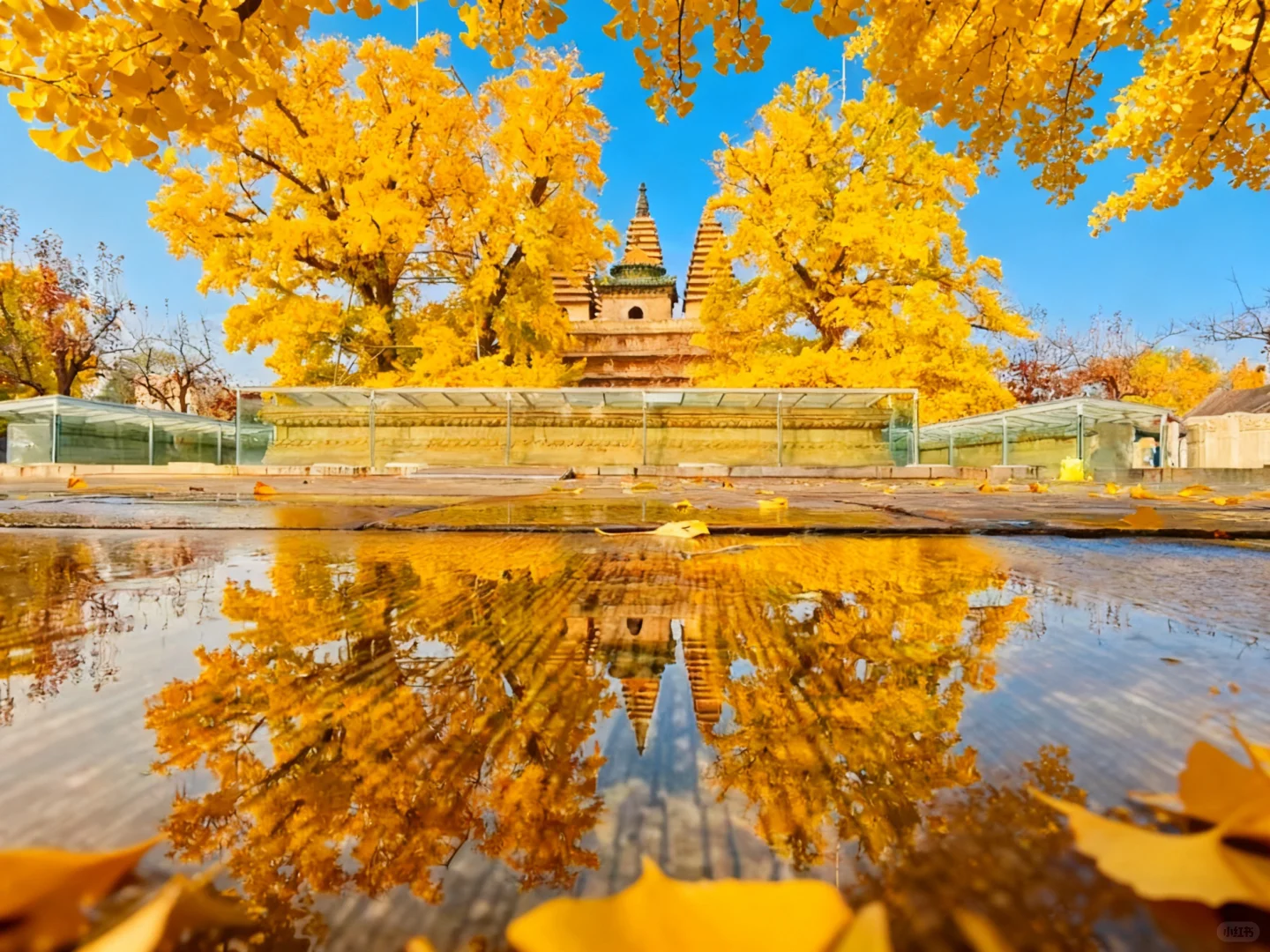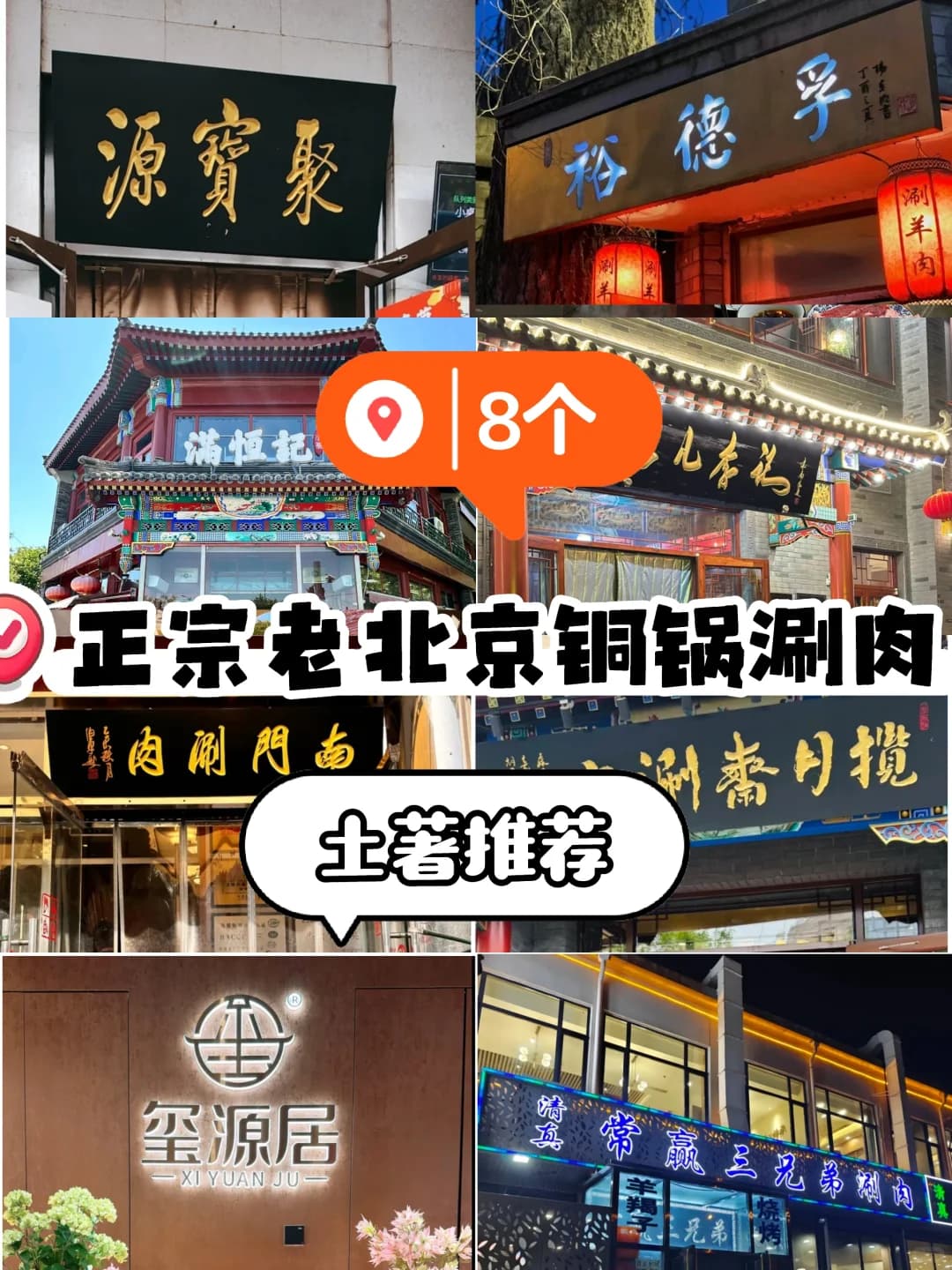Take a stroll through Beijing's hutongs this autumn, discovering charming doorways that showcase the rich seasonal ambiance and local culture.

Last Saturday, I got up super early just to snag the first wave of tickets at Beijing Wuta Temple. I arrived at the entrance right at 9 AM, and there were already a dozen people ahead of me, but luckily, the first 200 people on Wednesdays get in free, and I jumped on the last chance. As soon as I stepped in, two over 600-year-old ginkgo trees “bam!” hit my eyes, their golden leaves spilling like an overturned palette, and I was frozen in place. At that moment, all I could think was: So this is what autumn in Old Beiping really looks like.
I walked around the pagoda three times, and the crunch of leaves under my feet was more soothing than any background music. When the wind blew, ginkgo leaves dropped like rain, and I caught two in my hand, slipping one into my phone case—this fleeting autumn moment needs some proof.

It’s not a big place, just about the size of two football fields, but the combination of ancient pagoda + ginkgo trees + red walls + water pool is way too stunning. The Vajrasana Pagoda is a genuine Ming dynasty relic, with stone Buddhas looking all warm and kind. Looking up, the pagoda eaves and ginkgo branches overlap, like a golden edge set against the sky. The best part is that little water pool behind the pagoda, a rare “water mirror” spot in Beijing’s autumn; when the wind blows, the reflection breaks into starlight, then comes back together like a perfect painting—no matter how you shoot, it never gets old.

1️⃣ Reflection Kill: Don’t be in a hurry to walk forward after entering; first, look for some puddles. It rained the night before, and there was a puddle on the left at the entrance. I squatted down and put my phone on the ground; the Vajrasana Pagoda and the ginkgo tree reflected perfectly in the water, natural symmetrical filter. No puddles? Just bring a small mirror, put it on the ground at a 45-degree angle, and it’ll still work.
2️⃣ Details in Front of the Pagoda: Get closer to the pagoda; there are leaves all around the stone lions. Lean a ginkgo branch in front of the lens for the foreground, focus on the gaps in the stone lion's teeth, and blur the background into gold—the storytelling vibe skyrockets. Don’t overlook the five little Buddha figures on the pagoda; pick one with good light, frame it with leaves, and shoot in portrait mode to get a background depth that rivals a DSLR.
3️⃣ Water Mirror Technique Behind the Pagoda: Go around to the back; there's a stone by the water pool you can stand on. Put your phone close to the water’s surface, lens slightly tilted, and blue sky + ancient pagoda + ginkgo colors layer together like a postcard. Wait for the wind; when it blows, take rapid shots—you’ll get at least one perfect reflection.
4️⃣ Red Wall Reflecting Autumn: Don’t miss the red wall outside the exhibition hall. Stand at the wall’s base, have a friend stand three meters away, and take a shot with a 2x zoom. The red wall as the background with transparent ginkgo leaves, it naturally softens faces. Around 3 PM, the light is softest, and remember to bring a reflector—the white wall can also act as a reflector.

| Item | Information |
|---|---|
| Address | 24 Wuta Temple Village, Haidian District, Beijing, just search for "Beijing Stone Carving Art Museum" in your navigation |
| Subway | Come out of Exit C at National Library Station on Line 4, walk south for 300 meters, turn left when you see the old site of the zoo wholesale market, there's a big sign for Beijing Wuta Temple hanging at the entrance |
| Bus | Take bus routes 86, 92, 320, 481, 563, 653, 658, 695 and get off at "National Library" stop, walk as mentioned above |
| Driving | Navigate to "Beijing Stone Carving Art Museum." There’s a paid parking lot across from the Northern Entrance of Beijing Zoo, it’s 8 yuan/hour, and by 10 AM on weekends it gets full—better arrive before 9. |
Last Saturday at 11 AM, suddenly a fierce gust blew, and both ancient trees shook, raining leaves like popcorn. I stood under a tree and shot upwards, my phone snapping 200 pictures, and picked one with a leaf hovering in mid-air to post on Xiaohongshu, and it went viral. I wore a camel-colored coat, and the ginkgo rain softened the view into a creamy filter, capturing the shining moment of Beijing’s autumn.
If you also want to head to Beijing Wuta Temple to collect autumn, don’t hesitate, the ginkgo leaves of Beijing’s autumn won’t wait for anyone; miss this week, and you'll have to wait another year.
A personal guide to seven essential dining spots in the 798 Art District, offering delicious food perfect for gatherings. Each restaurant's signature dishes and average costs are detailed to provide you with a practical culinary guide.
Beihai Park is a captivating garden where the entrance fee is only 10 yuan. Visitors can enjoy a variety of beautiful landscapes with a recommended route that's easy to follow, making it suitable for all types of tourists. The park features attractions like the Quiet Mind Studio and the Nine-Dragon Screen, as well as rentable boats and a variety of blooming flowers. It's a perfect spot for photography and relaxation, and we highly encourage visitors to go.
Delve into the celestial coffered ceilings at Beijing's Ancient Architecture Museum, where you can admire the 1,427 stars of the Ming Dynasty's celestial design. Experience the charm of national treasures, discover unique pathways and hidden experiences, and immerse yourself in the romance and mystery of ancient architecture.
Explore curated city guides and local travel stories to plan your next China itinerary.
Take a stroll through Beijing's hutongs this autumn, discovering charming doorways that showcase the rich seasonal ambiance and local culture.

Experience the best value Xiangsheng in Beijing with a three-hour laughter-filled session at this comedy event. It’s an experience you simply can’t miss!

This article unveils the most breathtaking Citywalk routes in Beijing, featuring areas like Dongjiaominxiang and Xixinglong Street, along with a selection of charming shops and food recommendations, perfect for weekend exploration and capturing memories.

Discover an essential 3-day itinerary for your first visit to Beijing, featuring key attractions, local delicacies, transportation tips, and common pitfalls to avoid, ensuring a smooth exploration of this city where history meets modernity.

Discover eight authentic copper pot hotpot restaurants recommended by locals, offering genuine flavors and great value that will leave you craving more.
